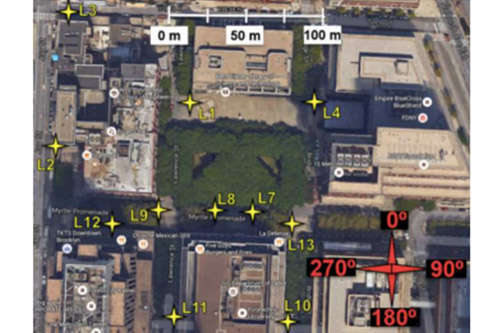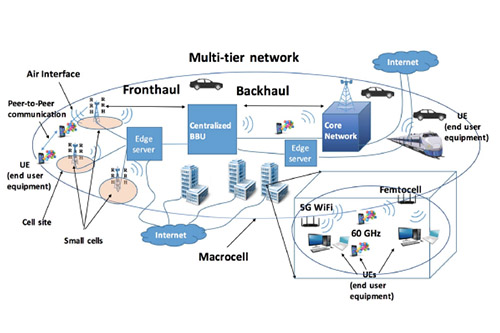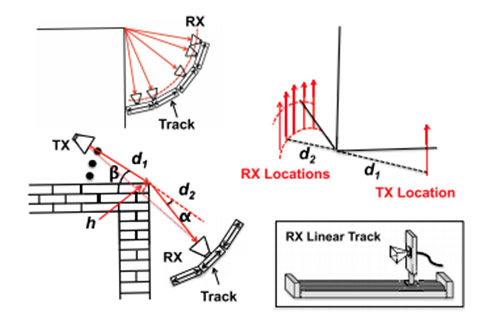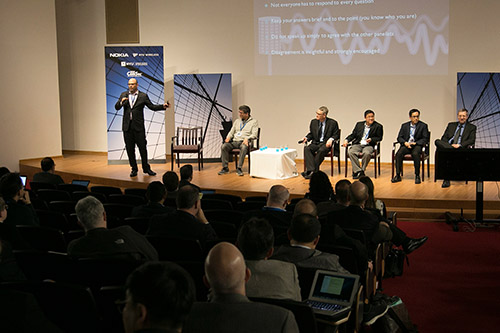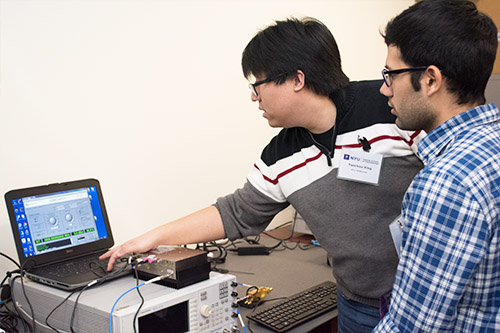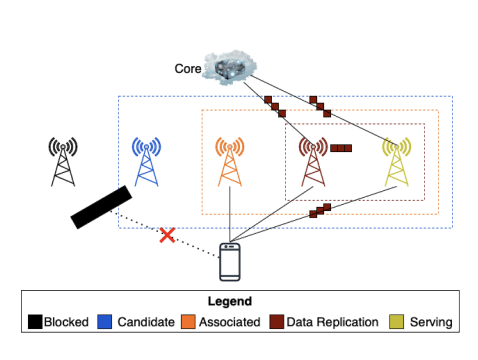AI-based Integrated Sensing and Communications

NYU Wireless P.I.s
Research Overview
Next-generation wireless networks are anticipated to evolve beyond their traditional role as information carriers to serve as distributed environmental sensors capable of perceiving and interpreting the surrounding environment. In this context, our work demonstrates that conventional cellular transmissions can be effectively repurposed for joint communication and sensing, thereby enabling the estimation of key propagation parameters such as the angles of arrival and departure, the time of arrival, and the Doppler shift within a practical bistatic framework having distinct transmitter and receiver units. By exploiting the channel estimates already available for communication purposes, the system can extract fine-grained geometric information about the environment without the need for additional spectrum allocation or specialized radar waveforms. This paradigm thus transforms ubiquitous wireless signals into an intrinsic sensing modality, allowing communication networks to achieve a radar-like awareness of their surroundings.
The proposed AI-based framework leverages neural networks designed to operate directly on complex-valued channel representations, thereby preserving the amplitude–phase relationships that characterize radio propagation phenomena. Through data-driven learning, these models implicitly capture the nonlinear mapping between the observed channel responses and the underlying physical parameters, achieving high-resolution estimation accuracy even under low signal-to-noise ratio conditions. Compared with conventional parametric estimators that rely on computationally demanding multidimensional searches, the learning-based approach attains comparable or superior estimation performance with substantially reduced complexity and latency. This efficiency renders real-time operation feasible in large-scale MIMO-OFDM systems and highlights the potential of AI-driven sensing to serve as a cornerstone of communication-centric radar functionality in future 6G networks, where wireless signals are not only carriers of information but also instruments of perception.

Fig. 1: Machine Learning model for predicting sensing parameters, i.e. time-of-arrival, angle-of-departure and angle-of-arrival.

Fig. 2: System model of a communication-centric ISAC model for sensing multiple targets

 2025 Brooklyn 6G Summit — November 5-7
2025 Brooklyn 6G Summit — November 5-7 Sundeep Rangan & Team Receive NTIA Award
Sundeep Rangan & Team Receive NTIA Award 2025 Open House
2025 Open House